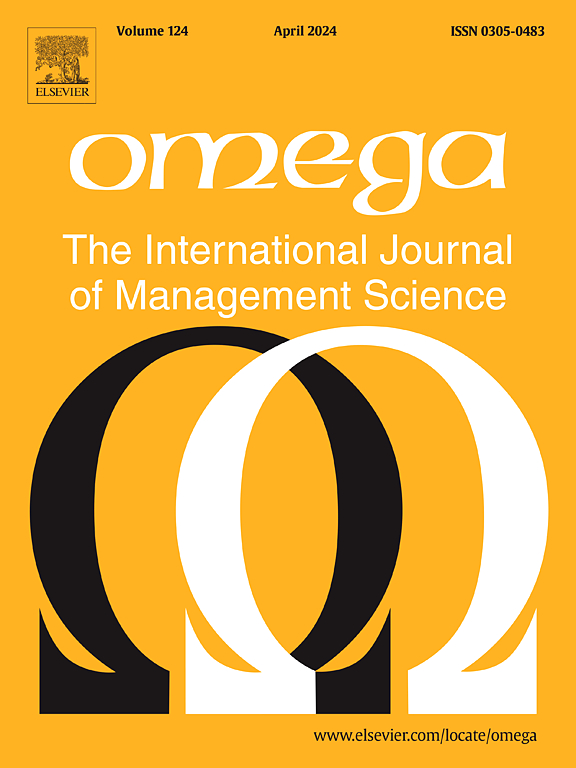Subsidy policy design for low-carbon products considering production and pricing competition
IF 7.2
2区 管理学
Q1 MANAGEMENT
Omega-international Journal of Management Science
Pub Date : 2025-06-23
DOI:10.1016/j.omega.2025.103391
引用次数: 0
Abstract
Government subsidy plays a crucial role in addressing the funding shortfall of low-carbon technology. This paper establishes a three-stage dynamic game model to investigate the interplay between the design of government subsidy policies and the low-carbon technology selection of two competing manufacturers. The government acts as a leader, strategically allocating subsidies for low-carbon product manufacturers and consumers. The two manufacturers, positioned as followers, make independent decisions regarding the technology they adopt for production and sales. We analytically deduce the equilibrium solutions and conduct numerical experiments to investigate the impact of crucial factors on the economy and environment. The results indicate that an increase in the investment cost for low-carbon technology induces the government to enhance not only the total subsidy amount but also the proportion directly allocated to consumers. Moreover, the manufacturers’ technology selection exhibits a dynamic response to government subsidies. As the subsidy amount increases, the two manufacturers change from both choosing conventional technology to low-carbon technology, which is independent of the recipients of the government subsidy. Interestingly, we find that the two manufacturers may fall into a prisoner’s dilemma regardless of the technology they choose. Adopting low-carbon technology is not always beneficial to the environment, especially when the output of low-carbon products is relatively high.
考虑生产和价格竞争的低碳产品补贴政策设计
政府补贴在解决低碳技术资金短缺方面发挥着至关重要的作用。本文建立了一个三阶段动态博弈模型,研究了政府补贴政策设计与竞争厂商低碳技术选择之间的相互作用。政府作为领导者,战略性地为低碳产品制造商和消费者分配补贴。这两家制造商定位为追随者,他们对生产和销售采用的技术做出独立的决定。我们通过分析推导出均衡解,并进行数值实验来研究关键因素对经济和环境的影响。结果表明,低碳技术投资成本的增加,不仅会促使政府提高补贴总额,还会提高直接分配给消费者的比例。此外,制造商的技术选择对政府补贴表现出动态响应。随着补贴金额的增加,两家制造商都从选择传统技术转向低碳技术,这与政府补贴的接受者无关。有趣的是,我们发现无论选择何种技术,两家制造商都可能陷入囚徒困境。采用低碳技术并不总是对环境有利,尤其是在低碳产品产量相对较高的情况下。
本文章由计算机程序翻译,如有差异,请以英文原文为准。
求助全文
约1分钟内获得全文
求助全文
来源期刊

Omega-international Journal of Management Science
管理科学-运筹学与管理科学
CiteScore
13.80
自引率
11.60%
发文量
130
审稿时长
56 days
期刊介绍:
Omega reports on developments in management, including the latest research results and applications. Original contributions and review articles describe the state of the art in specific fields or functions of management, while there are shorter critical assessments of particular management techniques. Other features of the journal are the "Memoranda" section for short communications and "Feedback", a correspondence column. Omega is both stimulating reading and an important source for practising managers, specialists in management services, operational research workers and management scientists, management consultants, academics, students and research personnel throughout the world. The material published is of high quality and relevance, written in a manner which makes it accessible to all of this wide-ranging readership. Preference will be given to papers with implications to the practice of management. Submissions of purely theoretical papers are discouraged. The review of material for publication in the journal reflects this aim.
 求助内容:
求助内容: 应助结果提醒方式:
应助结果提醒方式:


